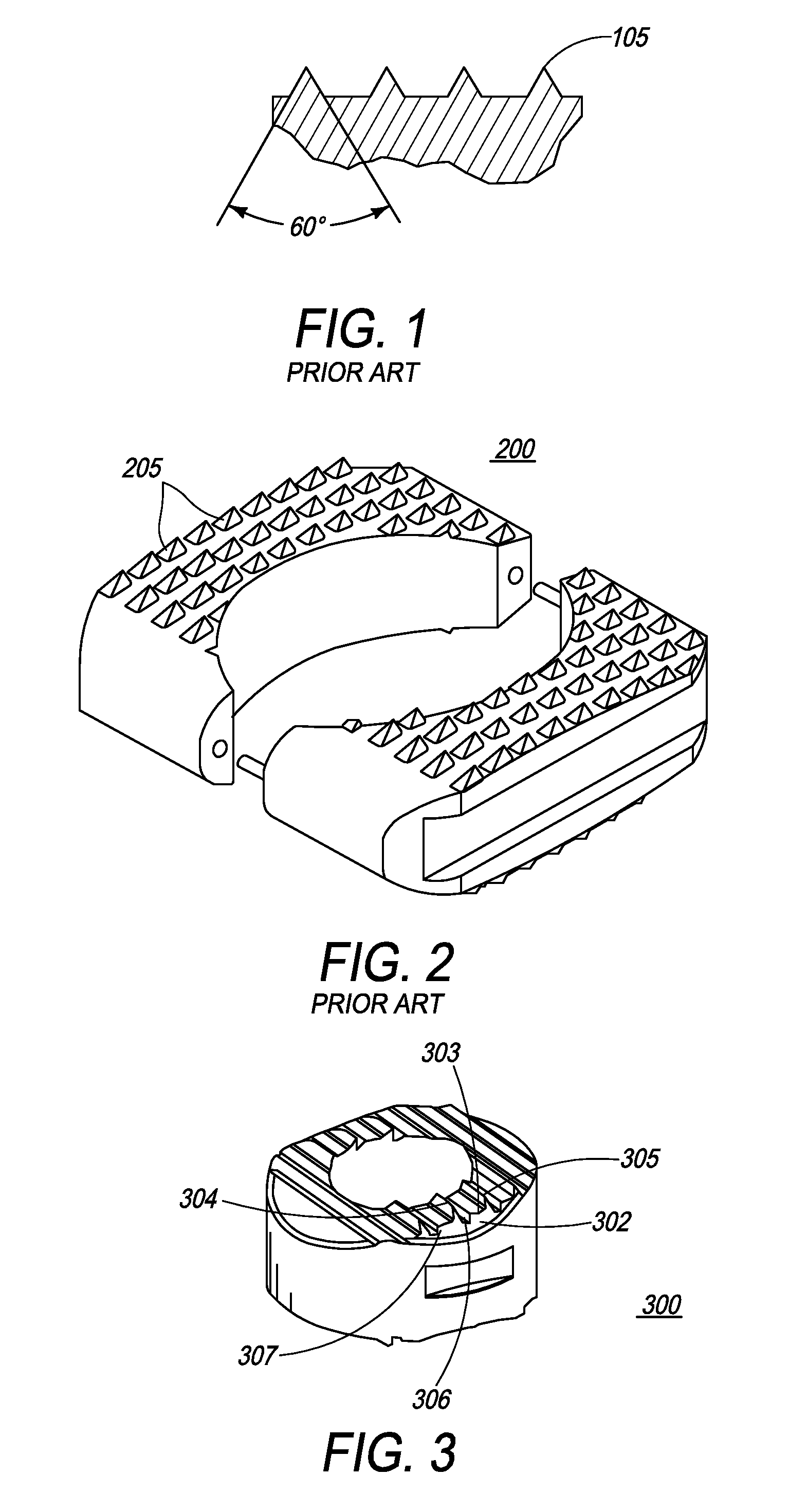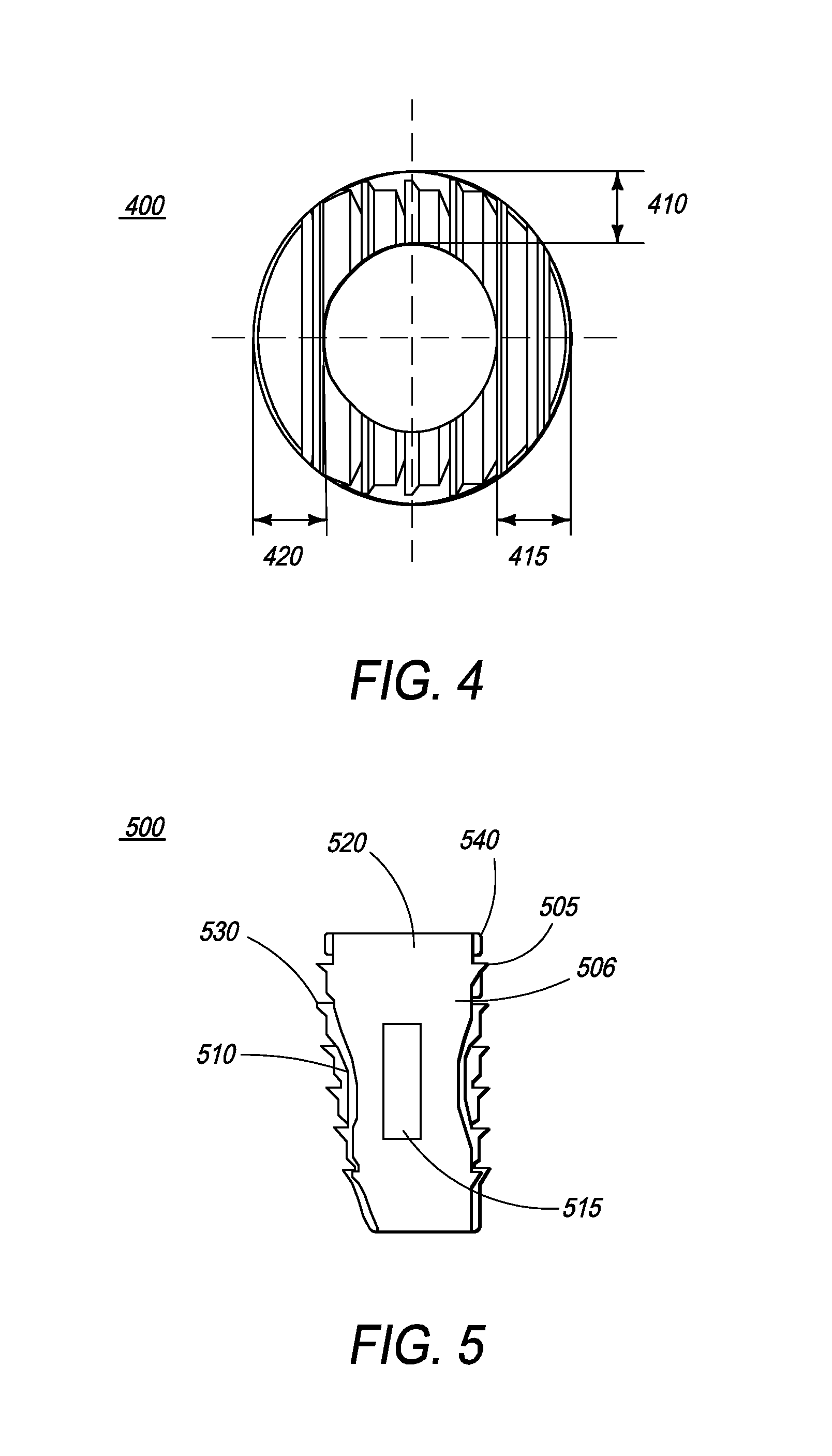Implantable intervertebral fusion device
a technology of intervertebral fusion and fusion device, which is applied in the field of implantable intervertebral fusion device, can solve the problems of further instability of the spine, increased adverse spinal conditions, and displaced or damaged spinal discs, and achieve the effect of restoring disc space height and spine curvatur
- Summary
- Abstract
- Description
- Claims
- Application Information
AI Technical Summary
Benefits of technology
Problems solved by technology
Method used
Image
Examples
Embodiment Construction
[0046]The present invention relates to an implantable intervertebral fusion device for use when surgical fusion of vertebral bodies is indicated. The implant is comprised of an allogenic cortical bone conforming in size and shape with the end plates of the adjacent vertebrae and has a wedge-shaped profile with a plurality of footings and grooves located on the top and bottom surfaces.
[0047]The top and bottom surface of the implant has a macro-texture and a micro-texture. The macro-structure is formed by a series of continuous footings and grooves that cross the implant from side to side. The relative placement of each footing and groove defines a surface upon which an osteoconductive and / or osteoinductive micro-structure may be applied. The top surface of the implantable device is a convex surface with its apex at the back of the implant and the bottom surface is flat planar surface or curved surface to match the topography of the end plate.
[0048]The lateral corners of the implantab...
PUM
 Login to View More
Login to View More Abstract
Description
Claims
Application Information
 Login to View More
Login to View More - R&D
- Intellectual Property
- Life Sciences
- Materials
- Tech Scout
- Unparalleled Data Quality
- Higher Quality Content
- 60% Fewer Hallucinations
Browse by: Latest US Patents, China's latest patents, Technical Efficacy Thesaurus, Application Domain, Technology Topic, Popular Technical Reports.
© 2025 PatSnap. All rights reserved.Legal|Privacy policy|Modern Slavery Act Transparency Statement|Sitemap|About US| Contact US: help@patsnap.com



